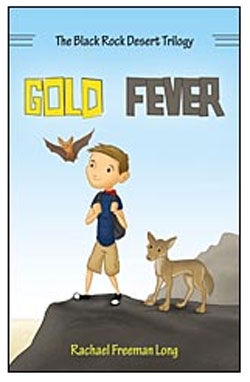
Written by Rachael Long, UC Cooperative Extension advisor in Yolo County, the story chronicles the adventures of 9-year-old Jack, who is exploring Nevada’s Black Rock Range when he falls into a cave. Jack befriends a bat named Pinta and a coyote pup named Sonny, who are determined to help him find his way home.
The story of Jack was first told to Long’s now 16-year-old son. When he was young, Long would make up stories to tell him during their long daily commute from their home on a farm outside of town.
“Each day, the stories got more and more elaborate,” Long said, “and I incorporated my long-time interest in bats.”
Long’s father, a UC Berkeley biology professor, introduced her to the world of bats. She was an early member of Bat Conservation International and she took a field class through the organization in 1992.
“The more I learned about bats, the more interesting I found them,” Long said.
As a field crops and pest management expert for UCCE, Long has worked to boost Californians’ appreciation for bats’ importance in pest control. The state is home to 25 species of bats, seven of which are commonly found in the Central Valley. Bats can consume their body weight or more in insects each night, with a colony of 500 bats eating a grocery bag full of insects from nightfall to dawn. The loss of bats in North America could lead to agricultural losses of more than $3.7 billion per year, according to an analysis published in the journal Science in April 2011. Long has researched bats’ role in reducing Sacramento Valley crop pests.
“We know that bats in the Sacramento Valley feed on insects such as moths, beetles and plant bugs that are often agricultural pests,” wrote Long when the results of her study were published in the January-February 1998 issue of California Agriculture journal. “Potentially, they may help reduce insect infestations in crops by feeding on these pests.”
Long also published a study of bats’ use of constructed bat boxes in the April-June 2006 California Agriculture journal. By evaluating the 186 bat houses in rural areas of California's Central Valley, Long learned that the flying mammals prefer houses mounted on structures such as buildings, those that are shaded or exposed only to morning sun, and within one-quarter mile of water.
Long is an author of the UC publication Songbird, Bat and Owl Boxes, which outlines methods for integrating nest boxes with farm management, provides details on construction and maintenance of nesting boxes, and information on other sources of reliable bat information. The publication includes plans for building a wildlife nesting house.
Naturally, Long sought to share what she knows about bat’s role in the environment with young readers in her fictional but scientifically sound children’s stories.
At the beginning of the book, when Jack falls into the cave, Pinta, the bat, is alarmed. “But as she flew around the cave, her keen ability to echolocate to find her way in the dark, gave her a different picture than she expected. Oh no, a boy, not a monster!” At first, Jack lies on the cave floor knocked out by his injuries. Long writes, “(Pinta) hovered above him, wings stretched more than a foot, beating rapidly but barely making a sound.”
Such tidbits about bats are sprinkled throughout the story. Young readers will be so absorbed in Jack’s journey home, the fate of an escaped jailbird and the search for gold, they won’t realize they are learning about natural science.
Tate Publishing quotes New York Times science journalist Jim Robbins as saying in a review of Gold Fever, “Bats play a little known, but vital role in the world. This book introduces young readers to their world in an engaging and entertaining way.”
Gold Fever is the first in the three-book "Black Rock Desert Adventure Series." Proceeds from the trilogy will go to fund bat conservation programs.